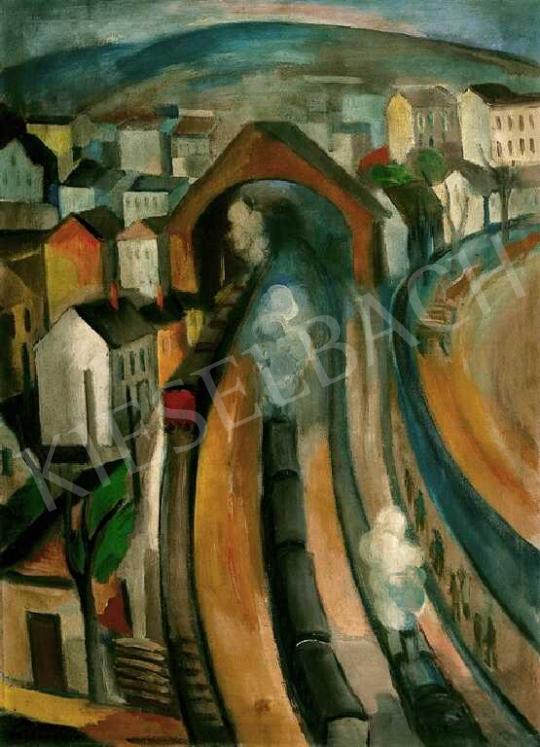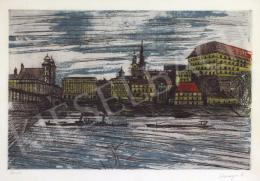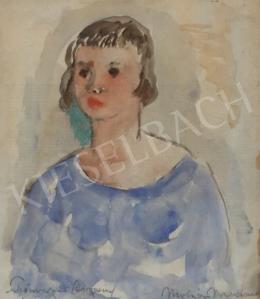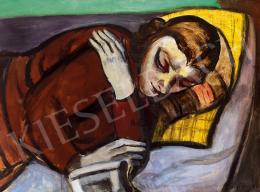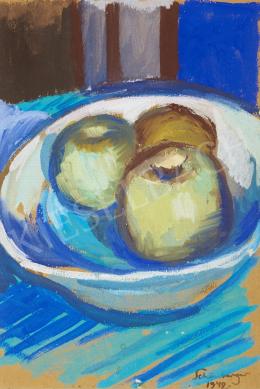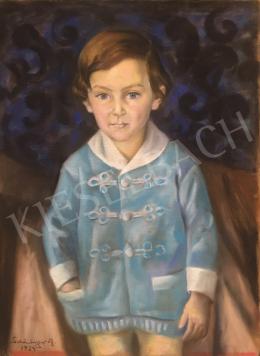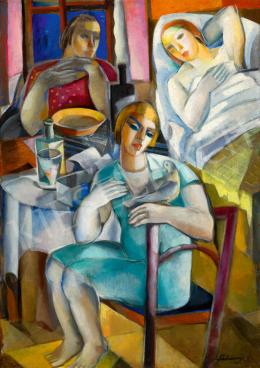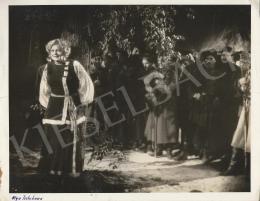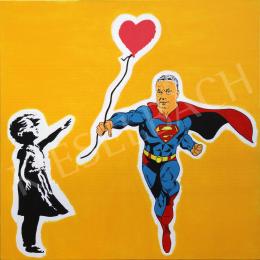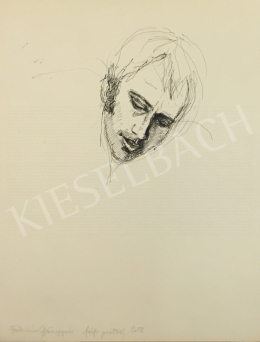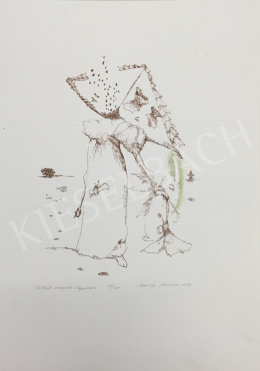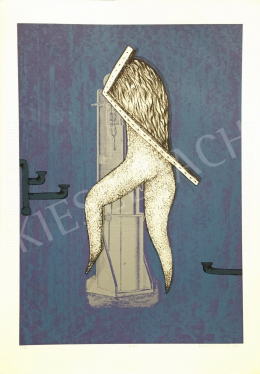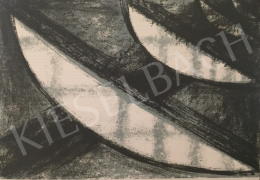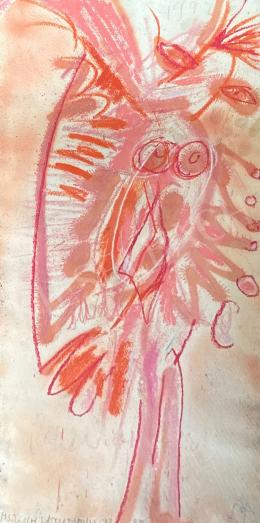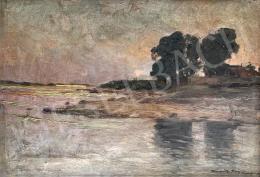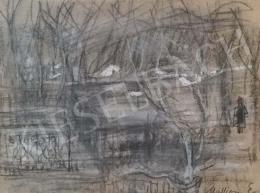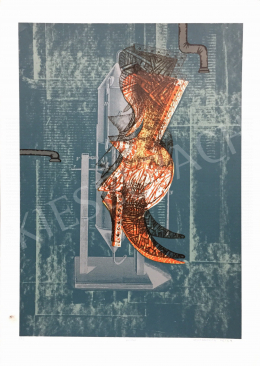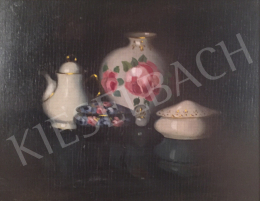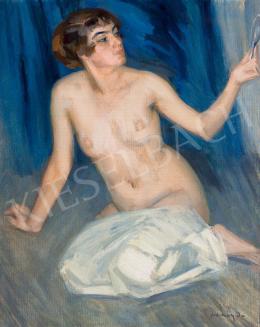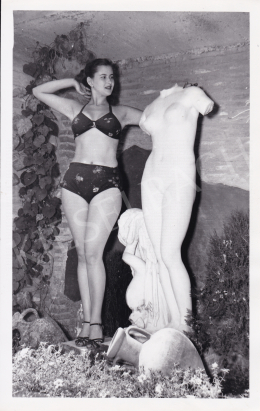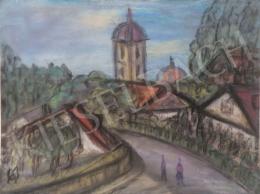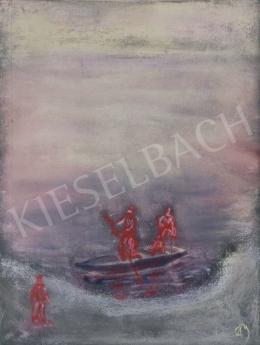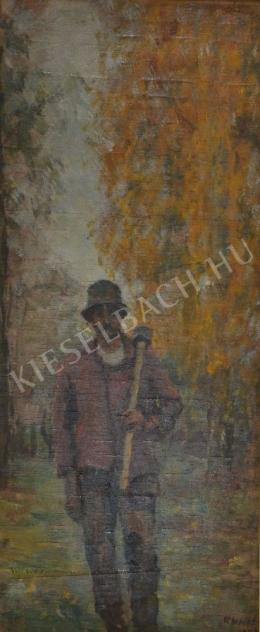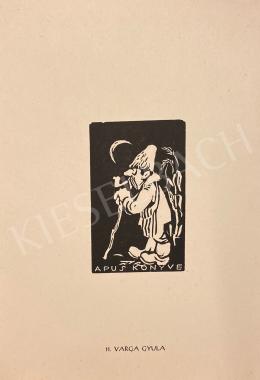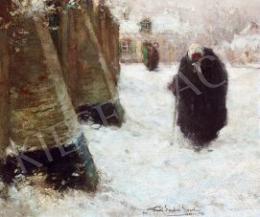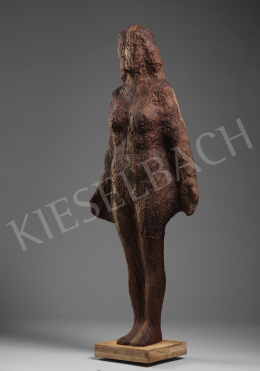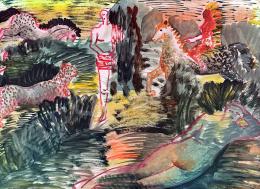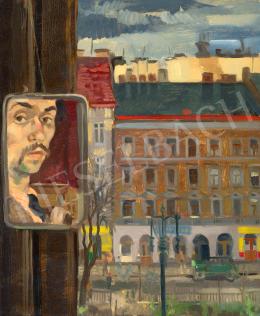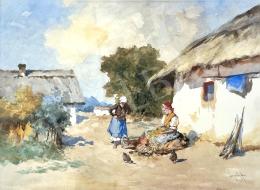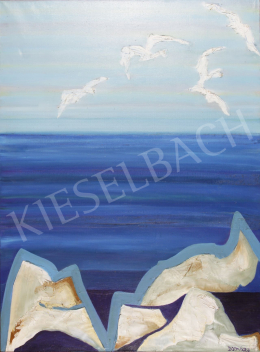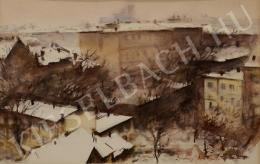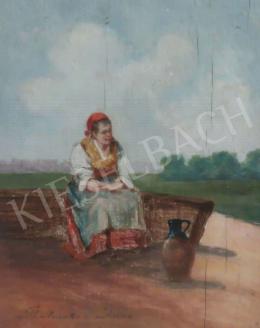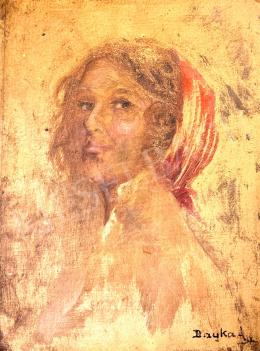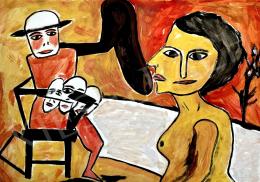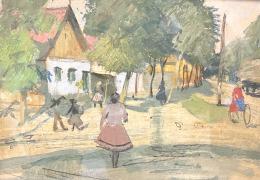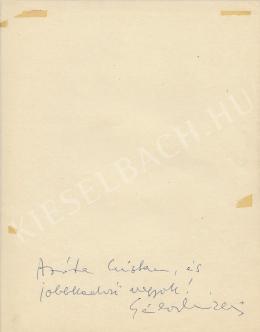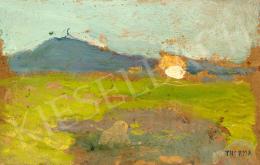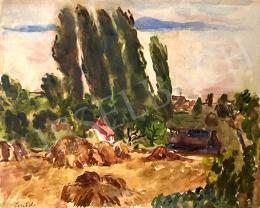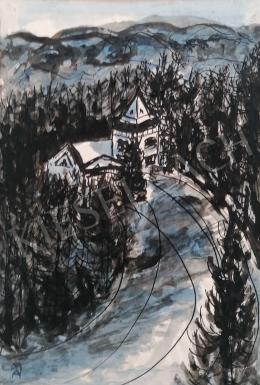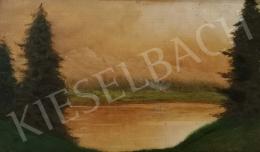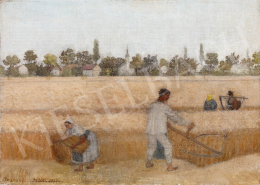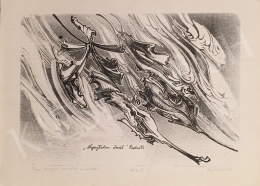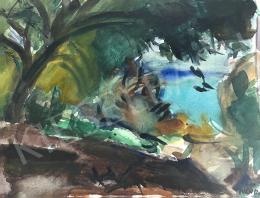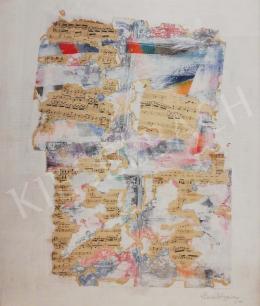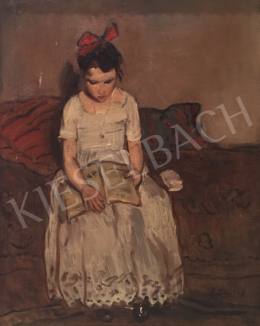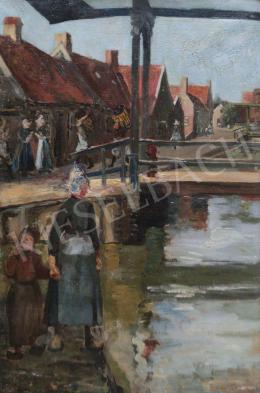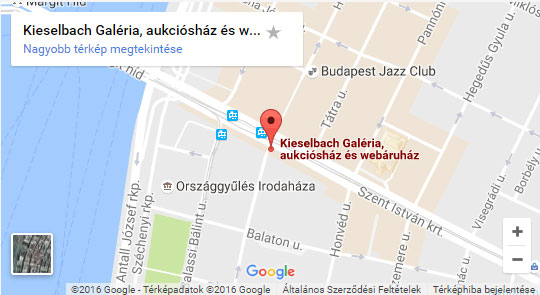Provenance:
The painting was given by the painter to Géza Novák, an architect, who belonged to the painter's circle of friends at Fészek Club. After his death, a relative of Mr. Novák came into possession of the painting.
The starting point to evolve his art has been marked by the evening drawings of nude models at the Art College, the liberal-spirited Azbe School in Munich, Germany, (between 1903 and 1905) and his trip to Paris in 1909. His first exhibitions was held in the Artists' House in 1910 and 1913 as well as in the National Saloon as a member of the 'Young Artists' group in 1917. His first exhibition of collected works was held in the Belvedere, known to embrace progressive trends, in 1923, which also introduced him as a seasoned and independent artist. He has contributed to the KUT (New Society of Artists) exhibitions on a regular basis. Between 1927 and 1930 he participated in a number of exhibitions abroad (Nagyvárad, Bratislava, Nuremberg, Malmö) either on his own or as a member of an artists' group. The main works of the period were put on display in the Tamás Gallery in 1930. His most significant artistic period between the two world wars secured him a position in the forefront of the modern artictic trends in Hungary. His works can be found in domestic and foreign museums (Hungarian National Gallery, Jewish Museum, Janus Pannonius Museum) and private collections.
One of the main themes of the works made by Schönberger in the twenties and thirties are 'metropolitan cityscapes' as put by Ernő Kállai. This group of paintings includes paintings of houses, blocks of houses, roofs and streets shown at wide angles as well as bridges, ports, railways and smokestacks to be found mainly in industrial zones. The city views (Blocks of Houses, 1923, András, 1984 i.m., 9th painting; Houses with church, 1924, same place, 14th painting; Houses, 1924, same place, 15th painting; Houses, around 1930; Houses on the hillside, 1930, same place, 29th painting; View of Buda, first half of the 1930s, same place, 34th painting) represent the painter's interest in the geometric shapes, tectonic blocks and entanglement of houses and the way their mass determines the structure of space, whereas the paintings of industrial landscapes (Under the bridge, 1922, András, 1984 i.m., 8th painting; Railway bridge crossing, around 1923, same place, 10th painting; Port, 1925, same place, 16th painting; Quay, 1928, same place, 19th painting) provide a way for him to express his emotions.
Consequently, the artistic methods utilized by the painter vary by the genre: on his city views he utilizes the space-forming techniques of the cubism, while his industrial landscape paintings are dominated by the heightened use of colors and quick movement of brush pencil as seen with the expressionists. By the second half of the thirties, the previously diverse artistic experimentations converge which results in a newly found acceptance and primariness of the natural view.
The painting titled Station represents this line of his works. It shows the railway station and the departing trains jammed between neighborhood houses, in the center of various cityscapes. The closest analogy is the Station (Southern Railway) made in 1938, that features gloomier colors and a more scumbled painting technique as compared to its counterpart probably made somewhat earlier. The earlier piece is characterized by richer, more pastose painting technique and more vivid colors. The presentment of the theme is not spontaneous or sketchy, instead the painter immersed himself in details. The scene visible on the right side is often painted as a theme on its own: a hillside with a horse-drawn wagon with bare trees. On the lower left corner of the painting there's a group of men and women, which is quite rare on cityscapes, it can rather be found in street scenes made in the twenties. As regards his artistic ambitions, this paintings has retained some of the expressionist style and stern composition of his earlier periods while at the same time foreshadows the gradual return to naturalism, which is a dominant trend of the late-thirties and the forties.
András, Edit dr.






